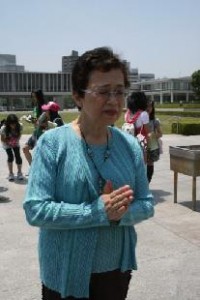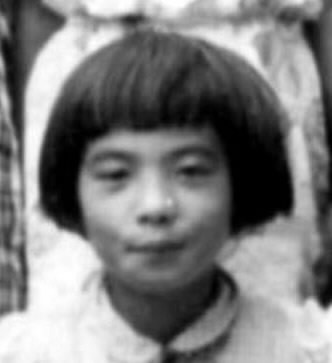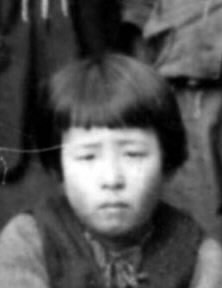Sharing the A-bomb Experience, Part 5
Aug. 3, 2009
Upholding a pledge to two young girls
by Uzaemonnaotsuka Tokai, Staff Writer
Before sharing her A-bomb account, she took out two photos from her bag. “Ecchan, Asa-chan, I’ll do my best.” She feels as if the girls with the bobbed hair are watching and lending their support.
Setsuko Enya, 69, is a resident of Asaminami Ward, Hiroshima. “Ecchan” was the nickname for Etsuko, her younger sister. Sixty-four years ago, the sisters, aged five and two, were exposed to the atomic bombing at their home in Hiroshima, about 1.6 kilometers from the hypocenter. Her mother, who had been on the veranda at the time of the bombing, saved the sisters and their grandmother from the wreckage of the house. After the war, they lived in a house owned by her father’s company in Saka Town, Hiroshima Prefecture.
Seven years later, Ecchan was in the third grade and good at sports. She often trained for relay races. But one summer, as the anniversary of the atomic bombing approached, she suddenly turned wan and weak.
Toward the end of September, Ms. Enya spoke to her bedridden sister as she left the house. “Have a good day,” Ecchan replied in a faint voice. When Ms. Enya returned home after school, her sister was dead. She dropped to the dirt floor and wept.
The other girl, “Asa-chan,” was Asako Kataoka, who was Ms. Enya’s classmate. She also moved to Saka Town with her family after the bombing. When they were in first grade, they played happily together. But the next year, while in second grade, Asako abruptly passed away. She heard that Asako had “vomited up congealed blood, like a crayon.” She died five years before Etsuko, Ms. Enya’s younger sister.
Sadako Sasaki, who became the inspiration for the Children’s Peace Monument in Peace Memorial Park, also died years after the bombing. Ten years had passed, but at the age of 12, she died of leukemia. The deaths of these children made Ms. Enya think that, “Children who experienced the atomic bomb are dying suddenly. Their deaths were probably caused by the bomb.”
Time passed. About 20 years ago, Ms. Enya, who was then working as a teacher at a school for children with special needs, was suddenly approached on the street: “Are you Secchan?”
It was Asako’s mother. She invited Ms. Enya to her home in Saka Town, where she cooked for her and taught her how to make handicrafts. Later, Asako’s mother handed her a photo of Asako and said, “Please don’t forget Asako.” The photo showed Asako at the entrance ceremony to elementary school. Other photos of Asako as a child had burned up in the atomic bombing. Since then, Ms. Enya has carefully kept the photo with a photo of her younger sister.
Ms. Enya said that she realized the significance of these photos in 2005, six years after her retirement. A former colleague asked her to speak about her A-bomb experience to students visiting Hiroshima on a school trip and she agreed to share her story with them.
Up to that point, she had not spoken about her experience as she believed the faint memories from her childhood did not give her the right to discuss it. But when she shows the photos of the two little girls and talks about them, everyone becomes quiet. Their eyes grow serious.
Ms. Enya also thinks about the emotions felt by Asako’s mother, who offered the photo of her daughter. Asako’s mother cooked for her and made crafts with her because, in her mind, she probably linked Ms. Enya with her daughter.
Ms. Enya now says to students on school trips: “War means that your friends might suddenly disappear. War means that nothing of you will be left but a single picture and your parents will grieve your loss forever.”
Ms. Enya has outlived her husband. With the passing of her mother last year, she is now the only atomic bomb survivor in her family. Upholding her pledge to the two girls in the photos, she continues to share her A-bomb experience.
(Originally published on July 28, 2009)










